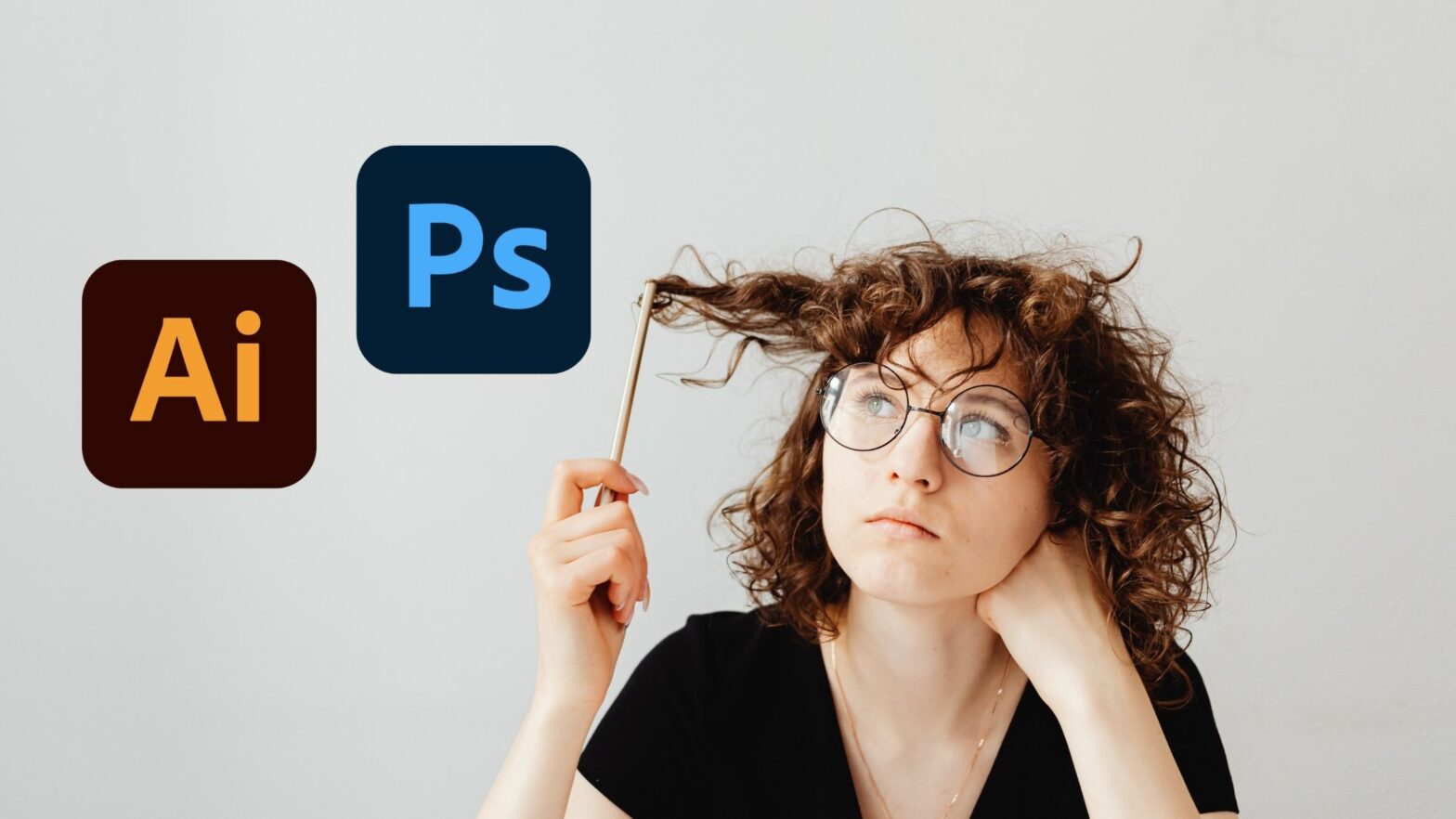You’ve purchased a vector graphic in Adobe Illustrator file format (.ai). Now, you’re wondering if you can open the image in this format in Adobe Photoshop?
Why yes, you can! Simply open the .ai file as you’d normally do to create a new document (File > Open) or place it inside your existing document (File > Place).
There are two ways to open a file in .ai format in Photoshop: You can open the file and create a new document by clicking on File > Open, or you can insert the file into an existing document by clicking on File > Place Embedded or Place Linked.
So which is better?
Placing the .ai file into your .psd document is the better option than opening it as a standalone document.
When you place an .ai file inside an existing document, Photoshop inserts it as a smart object, preserving the vector data and allowing you to resize and rotate it without losing quality.
When you open an .ai file as a standalone document, Photoshop will rasterize and flatten the file, losing its original vector characteristics.
This tutorial will guide you through them, with screenshots. We will also discuss whether or not you can open an .ai file in Photoshop with the original vector layers preserved.
How to Open the .Ai File as a New Document
Step 1: Open Adobe Photoshop.
Step 2: Click on File > Open from the upper menu. (You can also drag and drop the file to Photoshop, or use the Control + O shortcut on a Windows PC and Cmd + O shortcut on a macOS computer.)
Step 2: Locate the .ai file on your hard drive and click “Open.”
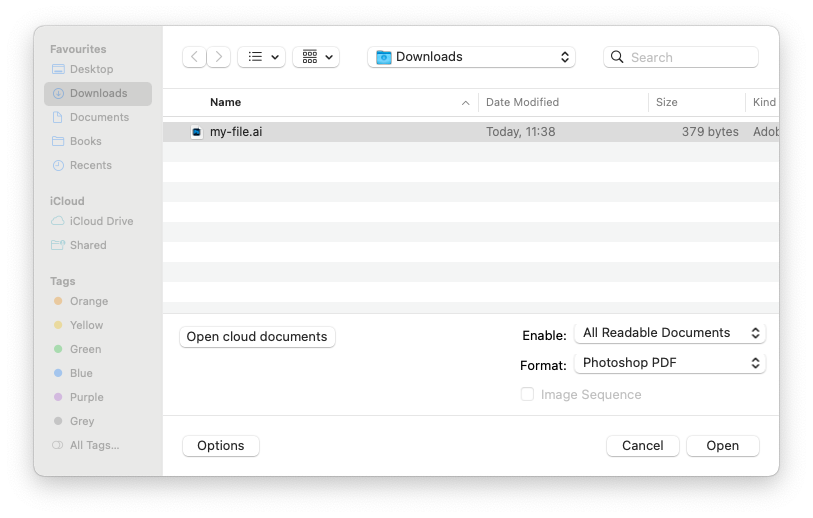
Step 3: Photoshop’s “Import PDF” dialog window will open up. Enter the width and height of your image, keep the “Anti-aliased” checkbox ticked, and click the “OK” button when you’re ready to open the file.
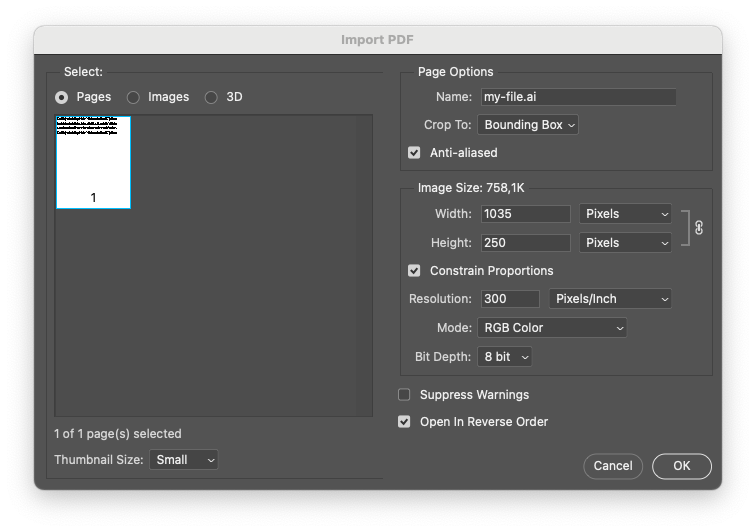
Step 4: You’re all set! Photoshop will flatten the file and open it as a rasterized, single-layer document.
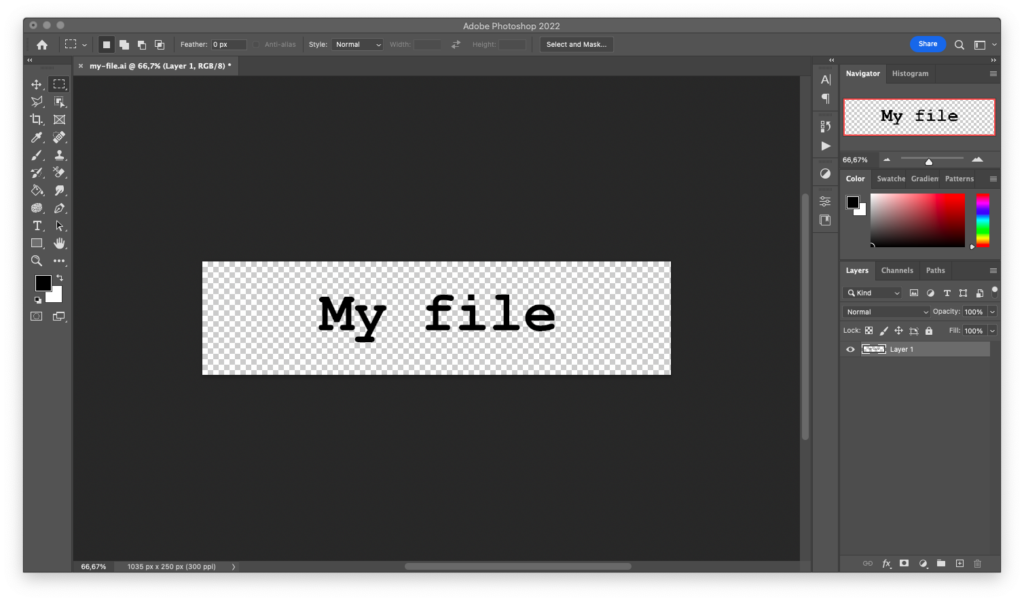
How to Place the .Ai File in Your Document
Step 1: Fire up Adobe Photoshop and open the document you want to place the .ai file inside of.
Step 2: Click on File > Place Embedded to embed the .ai file in the .psd document, or on File > Place Linked to link the .ai file within the .psd document.
What’s the difference between embedding and linking a file when placing it?
If you embed the .ai file, its contents will become part of the .psd file. The .psd file will be bigger, but you will be able to keep editing it whether or not you delete or move the original .ai file.
If you place the .ai file linked, you will have to keep it on your hard drive to be able to edit the .psd document.
Step 3: Look up the file on your hard drive and click on the “Open” button.

Step 4: The “Open as Smart Object” dialog window will pop up.
A smart object, as Adobe explains in Photoshop’s help section, is a layer that contains image data from the .ai file in a way that preserves its original characteristics.
When you open an .ai file (and other vector files, such as .eps files) as a smart object, you can scale it up and down within the canvas of your raster document without losing its quality.
Step 5: Scale the object from the .ai file as you wish within the canvas. When you’re ready to place it, press the Enter key on your computer’s keyboard.
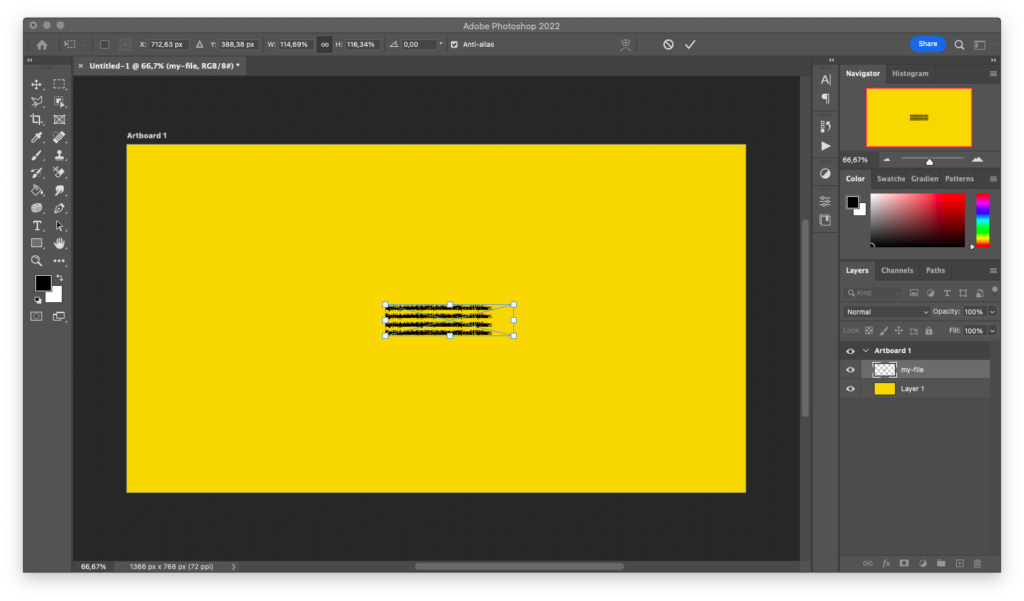
Step 6: You’re done!
When you look at the “Layers” window, you will notice that Photoshop inserted the contents of the .ai file as a smart object. As long as you keep it that way and you don’t rasterize the layer, you will be able to scale it up and down without losing quality.
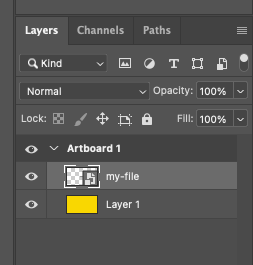
Can You Open an .Ai File in Photoshop With the Layers?
If you tried either—or both—of these methods, you may have noticed that the .ai file always opens as a single, uneditable layer.
What gives?
And can you open an .ai file in Photoshop with the vector layers preserved?
When you open an Adobe Illustrator (.ai) file in Adobe Photoshop, you can’t edit the vector layers. No matter if you open the .ai file as a new document or place it as a smart object inside an existing document, it will always show as a single layer.
The only way to export a file from Adobe Illustrator to Adobe Photoshop and make it editable is to export it in .psd format. When you do this, the vector image will be converted to a raster image.

